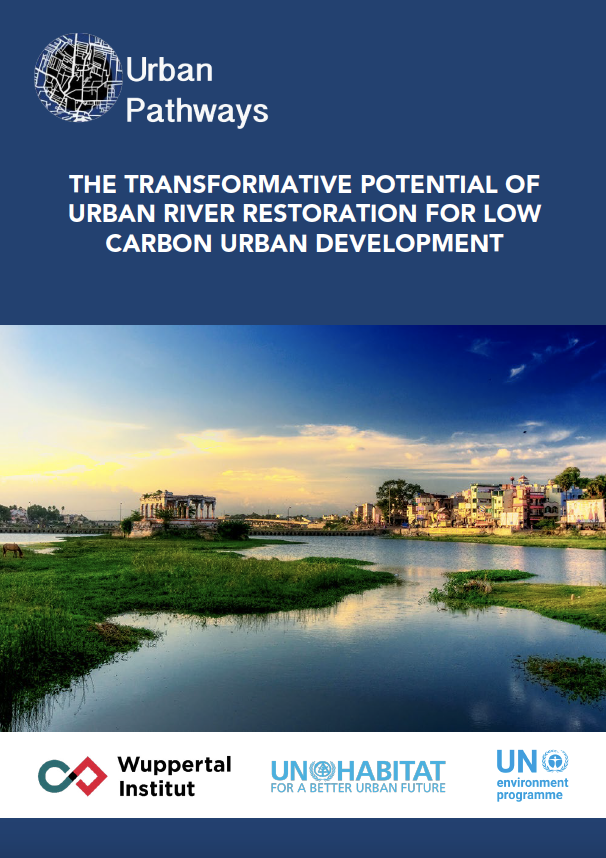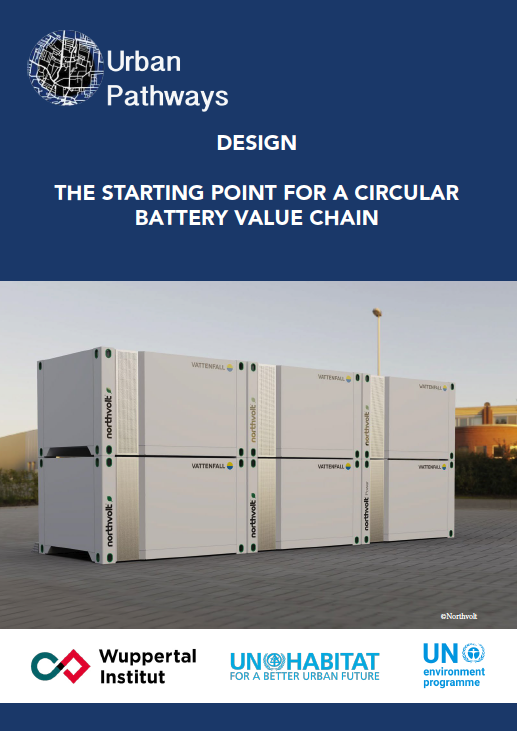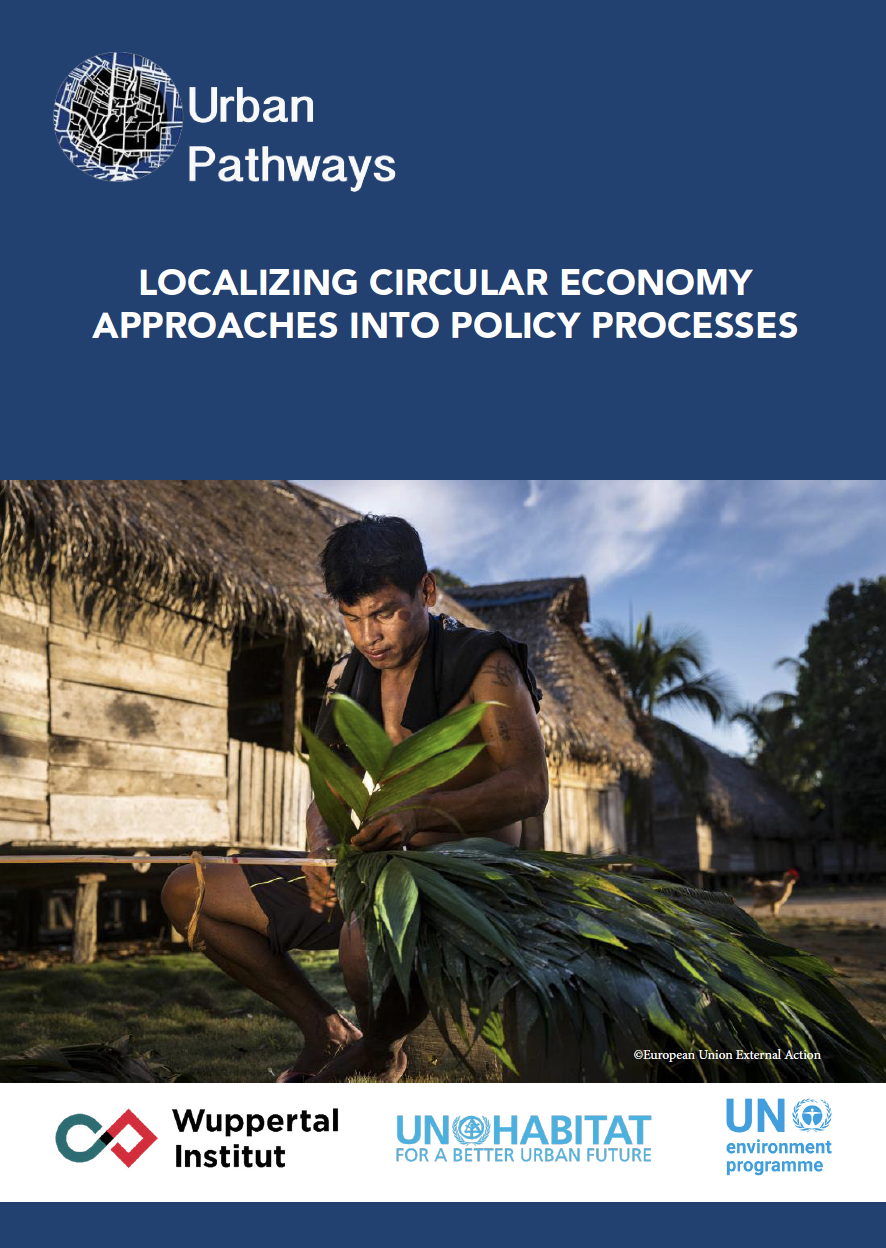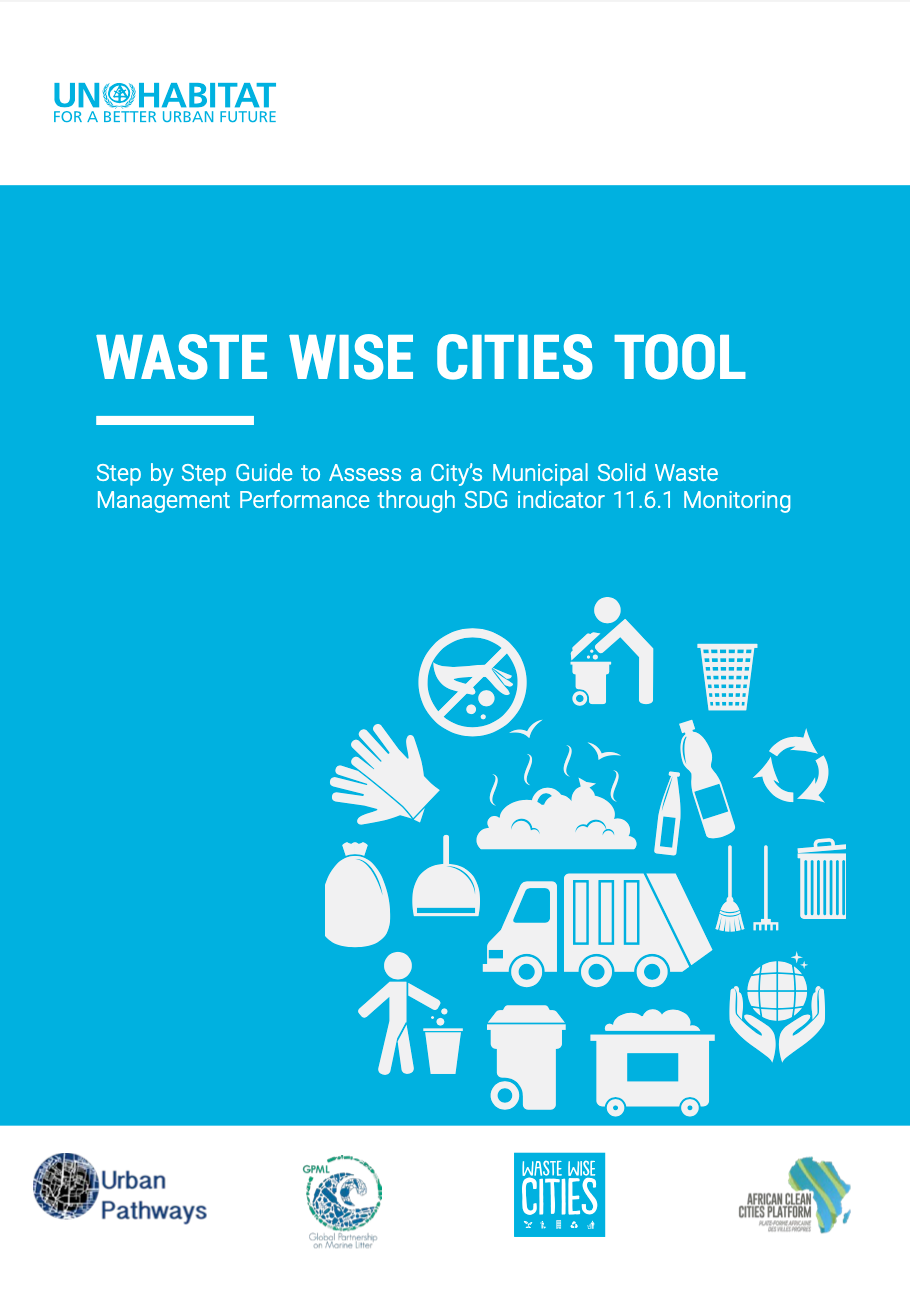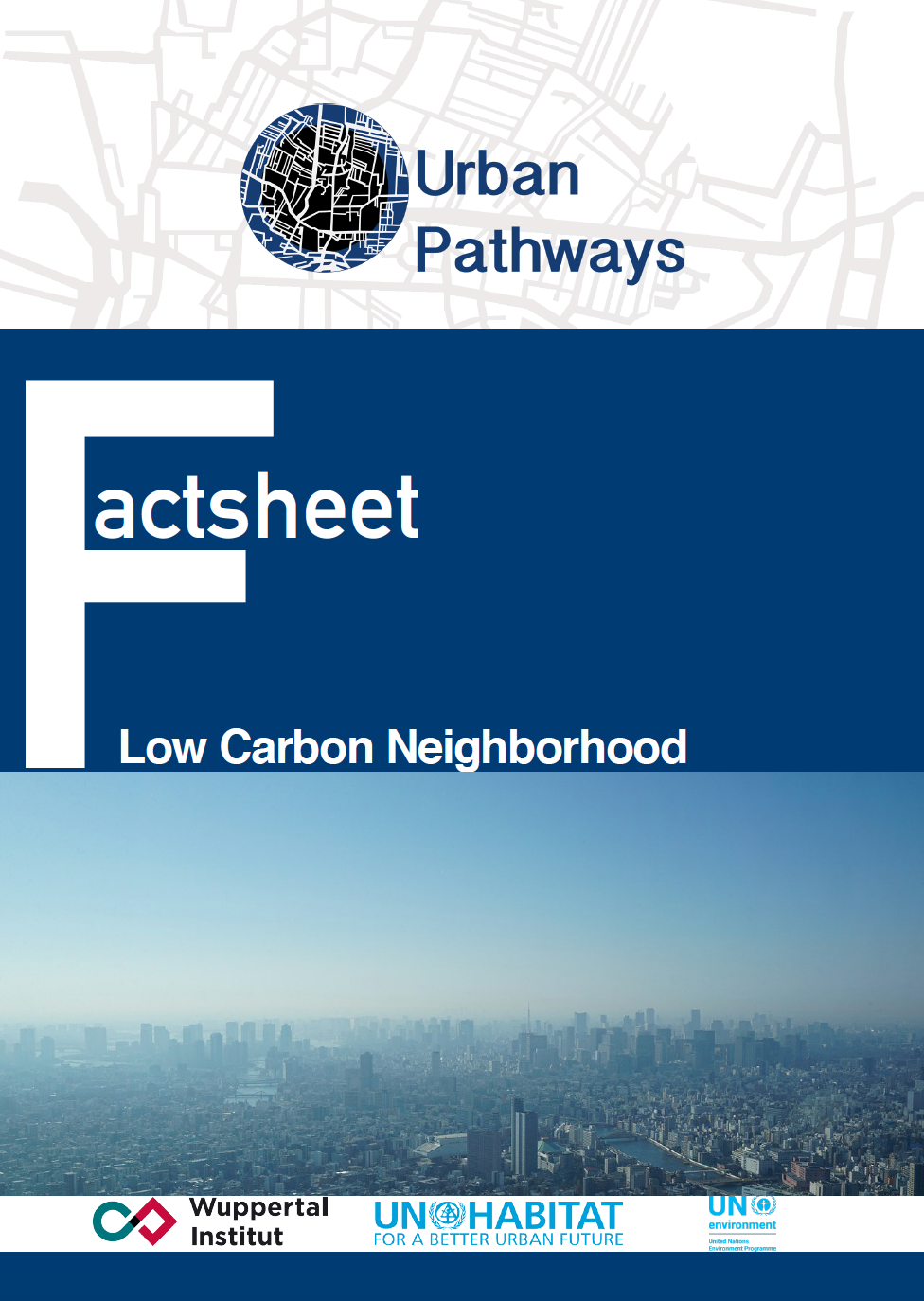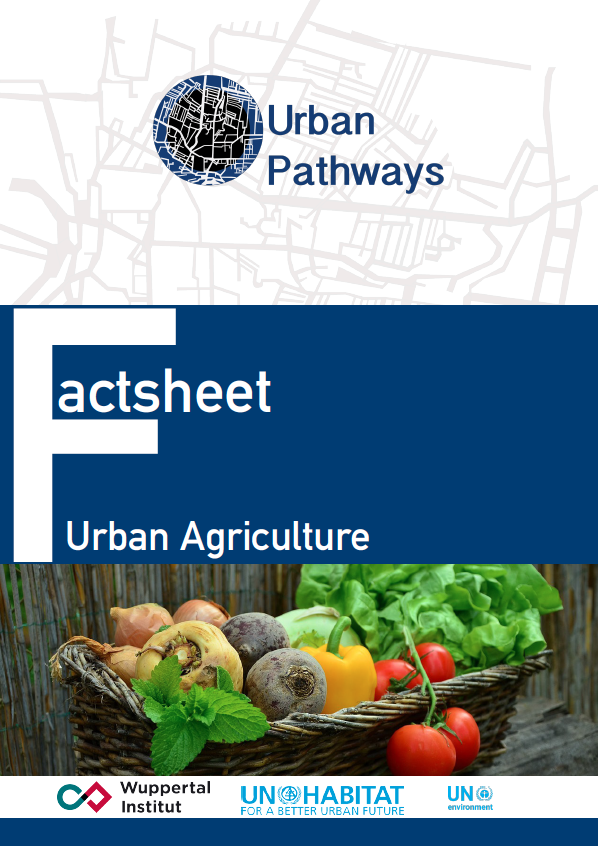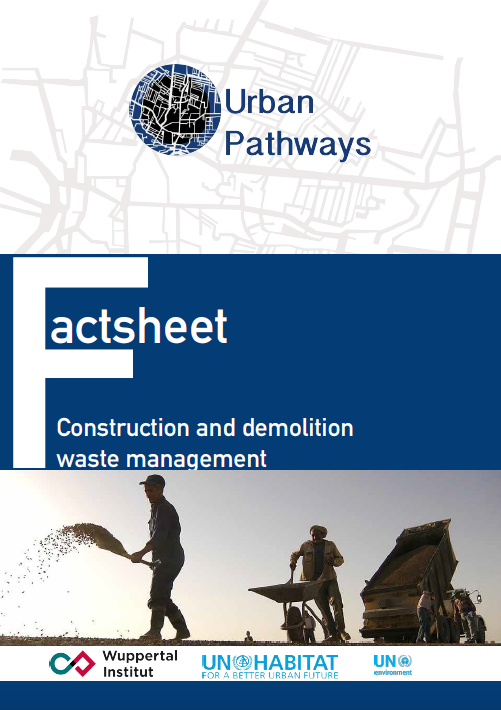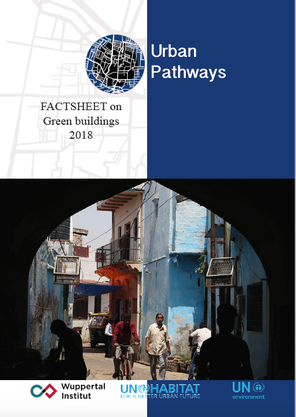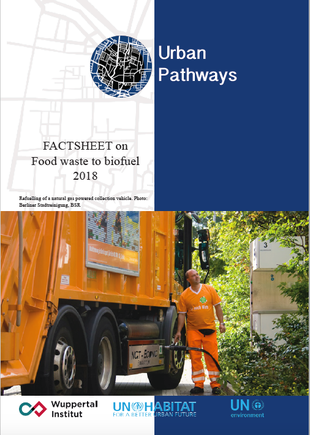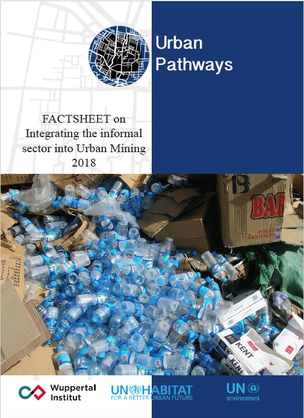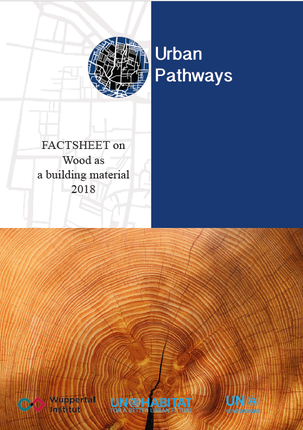Factsheets - Resources
|
Localising circular economy approaches into policy process
Author: Adriana Marchiori Silva (UEMI) The circular economy constitutes a profound change in the forms of production and consumption. It raises the need to leave behind the linear take-make-use waste logic to move towards a model in which waste and pollution are eliminated from the design stage, products and materials that enter the economic cycle stay in it for as long as possible or even indefinitely, and economic processes regenerate natural systems instead of degrading them. READ MORE |
|
Waste Wise Cities Tool (WaCT) for Urban Solid Waste Management
More than two billion people lack access to solid waste collection services and disposal facilities. This does not only cause major public health issues, but mismanaged waste is also leaking into our environment contributing to environmental degradation and marine pollution. Knowing that appropriately managed waste represents an important economic resource and promotes a circular economy, cities across the world are looking for solutions to the enormous amount of solid waste created over several years. Often, however, they lack the relevant data to decide on the most ideal solutions. This is why, UN-Habitat, together with other waste experts, and with support of the Urban Pathways project, has developed the Waste Wise Cities Tool (WaCT). It was created to make the process of collecting data on solid waste management easier and support city officials to improve waste management in their cities. It can also guide NGOs, educational institutions, and other stakeholders in their efforts to spread good practices on waste management. The WaCT consists of seven steps to collect all the necessary data on generation and collection of municipal solid waste as well as to estimate the quantity that is managed in controlled facilities. |
|
Factsheet: Low Carbon Neighbourhood
To tackle the pressing issue of climate change, cities and neighbourhoods must be transformed into low-carbon and sustainable places. There are few examples all over the world, which has incorporated low-carbon and sustainable planning and design measures in the city. Masdar City or Dongtan, China are examples of newly planned cities and neighbourhoods with such measures. There are also examples of existing low-carbon or eco- neighbourhoods in Sweden (Bo01 and Agustenberg in Malmö and Hammarby Sjöstad in Stockholm), Finland (Viiki in Helsinki), Germany (Vauban and Rieselfeld in Freiburg, Kronsberg in Hannover), Denmark (Vesterbro in Copenhagen), the Netherlands (Leidsche Rijn in Utrecht) and Great Britain (BedZED in Beddington). The neighbourhood scale level offers an integrated perspective on energy efficiency, renewable energies and mobility, e.g. to enhance sector coupling, it offers additional technological options (e.g. local heating, CHP) compared to solutions for single buildings and it has the potential to address real-world problems on the ground and thus creates local acceptance. In addition to reducing GHG emissions, low carbon neighbourhoods provide various co-benefits. They contribute to improving the local quality of life, are more resilient to the consequences of climate change and can support the local economy. It should therefore be in the interest of local authorities all over the world to transform their neighbourhoods to meet future needs. |
|
Factsheet: Urban Agriculture
Most of the cities depend on conventional industrial agriculture. Despite its productivity gains in recent decades, its environmental and social costs are neglected which makes it unsustainable. The use of pesticides/fungicides and fertilisers contributes to the extinction of species and pollutes groundwater. The global value chains lead to increasing food transportation and cultivation methods which degrade soils and require enormous quantities of water. |
|
Factsheet: Construction and demolition waste management
Urbanisation and population growth leads to a massive increase in construction activities for housing, offices, industry and infrastructure. The exploitation of raw materials (gravel, sand, etc.) causes environmental impacts (land use, impacts on water bodies and GHG emissions), specifically when transport distances for construction materials increase due to local shortages in rapidly urbanising areas (CPCB, 2017). Case Study: Delhi - India |
|
Factsheet: Green buildings
Conventional construction techniques account for significant adverse environmental impacts, due to their major energy and resource consumption: global energy use (40%), global GHG emissions (38%), global potable water use (12%) and solid waste streams (40%) result from building activities. Total emissions from the cement industry contribute up to 8% of global CO2 emissions (Andrew 2017). The careful design of green buildings in developed and developing countries can reduce building related energy use by 30-50%, GHG emissions by 35%, water use by 40% and waste outputs by 70%. The integrated design approach in green buildings optimises energy use and incorporates renewable energies, saves water and ensures its reuse/ recycling, uses efficient means of transport and reduces distances, undertakes site planning and biodiversity conservation, improves indoor environmental quality and occupant’s health with thermal comfort, reuses and recycles materials and manages waste effectively - aiming at the reduction of the environmental footprint of buildings. Green building certificates such as DGNB in Germany, BREEAM in UK, GRIHA in India are some of the rating systems for evaluating and certifying green buildings. |
|
Factsheet: Food waste to biofuel
Organic and food waste makes up major portion of municipal solid waste (MSW). According to the Food and Agricultural Organization of the United Nations, roughly 1.3 billion tonnes, or one third, of the food produced in the world for human consumption is lost or wasted every year (FAO 2013). Rising levels of affluence and living standards in many countries increase the amount of food waste. In most countries, food waste is disposed at landfills along with other municipal solid waste. The degradation of this waste fraction in landfills is creating problems such as air pollution, odour, and leaching. Organic components are major sources of GHG emissions from landfills, most notably carbon dioxide and methane. The IPCC expects that global annual emissions from solid waste disposal contribute 5-20% of global anthropogenic methane emissions, equalling 1-4% of the total anthropogenic GHG emissions. In this regard, biofuels from waste may serve as a ’new’ source of energy. Biofuels such as bioethanol and biodiesel from organic waste fractions may substitute parts of demand for fossil fuels. Thus they might lower GHG emissions from landfills, contribute to energy security and access to energy. The systematic use of food waste as an energy source requires separate collection (or segregation) of the organic waste fraction and capital-intensive technological equipment for the conversion of waste to energy but may also lead to considerable cost savings in the mid-turn. |
|
Factsheet: Integrating the informal sector into Urban
Urban mining refers to (re-)using material already present in the urban environment, i.e. materials embedded in obsolete buildings, infrastructure, products, or even landfills, as input for socioeconomic activities. SDG 12 aims to establish sustainable consumption and production patterns. This includes the environmentally sound management of all waste and substantially reduced waste generation through prevention, reduction, recycling and reuse. This will be measured through the indicators recycling rates and amount of material recycled. Increasing the use of recycled material and closing material loops can greatly lower GHG emissions from mining, land-use for biotic materials, and emissions from waste disposal. Open landfills and unsorted waste disposal are major sources of GHG emissions, notably methane. Urban mining requires efficient delivery of urban services such as the collection, segregation and safe disposal of waste. In India, for example, only 35% of households have access to solid waste management services and less than 40% of solid waste is segregated (Janaagraha Centre for Citizenship and Democracy and Jana Urban Space Foundation 2016: 10). |
|
Factsheet: Wood as a building material
The building and construction sector is one of the main contributors to global GHG emissions. According to the IPCC’s fifth assessment report, the building sector is responsible for 6.4% of direct and 12% of indirect GHG emissions (IPCC, 2014). This is mostly due to embodied energy in concrete and steel, i.e. the energy that was used for the production of these materials. If energy consumption for heating and hot water is also considered buildings even consume approximately 40% of the total energy used and contribute roughly 30% of total GHG emissions. Another pressing issue is the diminishing availability of abiotic building materials such as sand or gravel in many regions with high building activities. Moreover, building and construction waste is one of the heaviest and most voluminous waste streams. Substitution of carbon-intensive cement and steel in the construction sector with wood from sustainably managed forests can be an approach to tackle these issues. The use of wood as building material has a long tradition in many parts of the world. Due to its wide availability and affordability, wood was widely used as a building material before abiotic materials such as stone, brick, concrete and steel replaced it. Today, sophisticated wood constructions are rediscovered in many cities and even used for modern high-rise buildings. Governments and city administrations can support the use of timber in architecture. |



